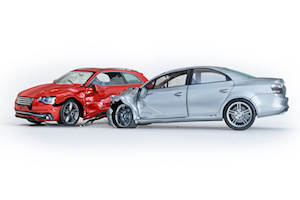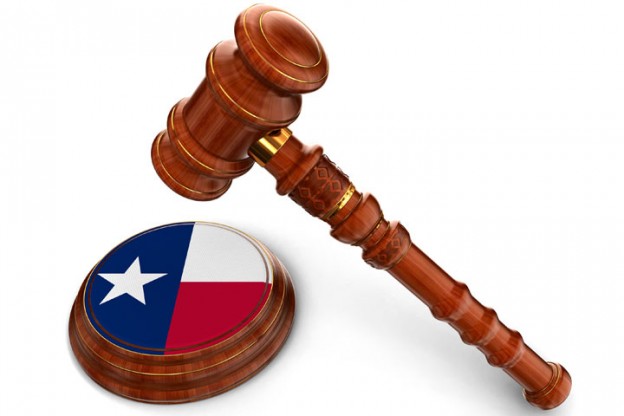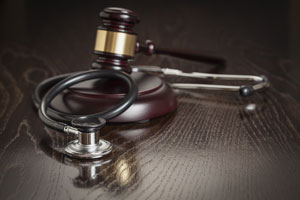Lawyers might be experts in a field of law, but they are not typically experts in the practices followed by other industries. The California Court of Appeal identified an exception to that rule in a case involving a lawyer who was proposed as an expert witness in medical industry practices concerning a physician’s right to a hearing before the termination of hospital staff privileges.
Facts of the Case
Farzin Tayefeh signed a two-year agreement to work with Somnia, Inc. as an anesthesiologist at Kern Medical Center (KMC) in Bakersfield. Somnia’s anesthesiologists were independent contractors rather than employees.
Tayefeh’s agreement with Somnia required him to maintain his hospital staff privileges at KMC. The suspension or termination of hospital privileges was a ground for the immediate termination of the agreement.
Somnia’s anesthesiologists were given an application for temporary hospital privileges at KMC. If privileges were granted and if Somnia decided that it was satisfied with the anesthesiologist’s work, it would ask KMC to give the anesthesiologist full staff privileges.
By signing the application for temporary privileges, Tayefeh agreed to obey KMC’s bylaws. The bylaws provided that, with one exception, temporary privileges could be terminated with or without cause and without a hearing. The bylaws entitled a doctor to a hearing if termination was based on a “medical disciplinary cause or reason.”
Tayefeh represented on his application for temporary privileges that he was not subject to any pending disciplinary action. About two weeks after Tayefeh was granted temporary privileges, the Medical Disciplinary Board notified KMC that it had filed a complaint against Tayefeh for prescribing medication without a patient examination and without maintaining adequate records. The complaint was filed before KMC granted temporary privileges to Tayefah.
The KMC bylaws require doctors with hospital privileges to notify KMC within ten days after a disciplinary action is commenced. Tayefeh did not notify KMC of the complaint. KMC terminated Tayefeh’s privileges for two reasons: (1) failure to report the disciplinary action and (2) the serious nature of the accusations involved in the complaint.
KMC did not give Tayefeh a hearing because it did not regard either justification for termination as a “medical disciplinary cause or reason.” Because he no longer had staff privileges, Somnia terminated its agreement with Tayefeh.
Tayefeh sued KMC for failing to give him a hearing. The trial judge decided that the meaning of “medical disciplinary cause or reason” was subject to conflicting interpretations as the term applied to Tayefeh’s conduct and should therefore be resolved by a jury.
Expert Witness Dispute
A California statute defines “medical disciplinary cause or reason” as any aspect of a doctor’s “competence or professional conduct that is reasonably likely to be detrimental to patient safety or to the delivery of patient care.”
At trial, KMC called an expert witness to educate the jury about the application of the term “medical disciplinary cause or reason” to the termination of Tayefeh’s hospital privileges. The expert testified that, in his opinion, the reasons for terminating Tayefeh’s privileges did not include medical discipline as that term is understood in the medical industry.
Tayefeh wanted to call Arthur Chenan as an expert witness. Chenan is not a physician. He has never participated in making a decision to revoke or suspend a physician’s hospital staff privileges.
Chenan is an attorney who has advised hospitals and medical staffs about whether state law required them to report a physician’s conduct to the medical board. Reporting is mandatory when staff privileges are suspended or revoked for a medical disciplinary cause or reason.
The court decided that Chenan was not qualified to testify as an expert. The court concluded that Chenan was not a doctor and was thus unqualified to testify about the medical industry. Accordingly, the jury only heard expert testimony from KMC. By a 9-3 vote, the jury ruled in favor of KMC.
Appellate Court Analysis
California law permits courts to rely on extrinsic evidence — any evidence that goes beyond the words themselves — to interpret ambiguous contract language. The court applied that same rule to the bylaws that were referenced in Tayfeh’s contract.
The appellate court agreed with the trial court that the phrase “medical disciplinary cause or reason” was ambiguous. Expert testimony about the meaning that is customarily given to that phrase in the medical industry was therefore the kind of extrinsic evidence that is admissible in a trial that hinged upon the interpretation of that language.
California follows the customary rule that a witness “is qualified to testify as an expert if he has special knowledge, skill, experience, training, or education sufficient to qualify him as an expert on the subject to which his testimony relates.” The appellate court rejected the trial court’s conclusion that only a doctor or a hospital administrator can testify about the customary meaning given to a term used in medical bylaws.
That Chenan is not a doctor or a hospital administrator does not mean he lacks knowledge of industry standards when the term “medical disciplinary cause or practice” is applied in the hospital peer review industry. Chenan was not asked to testify about medical matters that require a physician’s training. Nor was he asked about a topic that only a hospital administrator would be qualified to explain.
Knowledge and experience do not need to be gained by working in a particular field. Chenan has taught courses and has published articles in the area of medical staff credentialing, hospital peer review, physician discipline, and restriction of staff privileges.
The court acknowledged that general litigation experience might be insufficient to qualify an attorney as an industry expert. The court noted that a lawyer who handles bad faith claims against insurance companies is not necessarily an expert in insurance industry standards for approving or denying claims.
While an attorney who occasionally represents doctors in employment matters might not have the requisite experience to support an expert opinion, Chenan had years of experience “advising hospital boards, medical staffs, and physicians specifically about peer review matters.” He frequently advised those entities whether a suspension or revocation of staff privileges triggered a reporting requirement because it was based on a “medical disciplinary cause or practice.”
Chenan’s testimony was not founded on knowledge gleaned from litigation experience, but on specific work as an advisor to the medical industry on peer review matters that required the application and interpretation of hospital bylaws. Given Chenan’s experience, the fact that he is a lawyer advising the medical industry rather than a hospital administrator working within the medical industry did not disqualify him from rendering an expert opinion.
The divided jury verdict indicated that this was a close case. Excluding the plaintiff’s expert testimony left the defendant’s expert testimony unchallenged by another expert. The trial court’s erroneous exclusion of Chenan’s testimony might therefore have affected the verdict. The appellate court accordingly reversed and remanded for a new trial.












